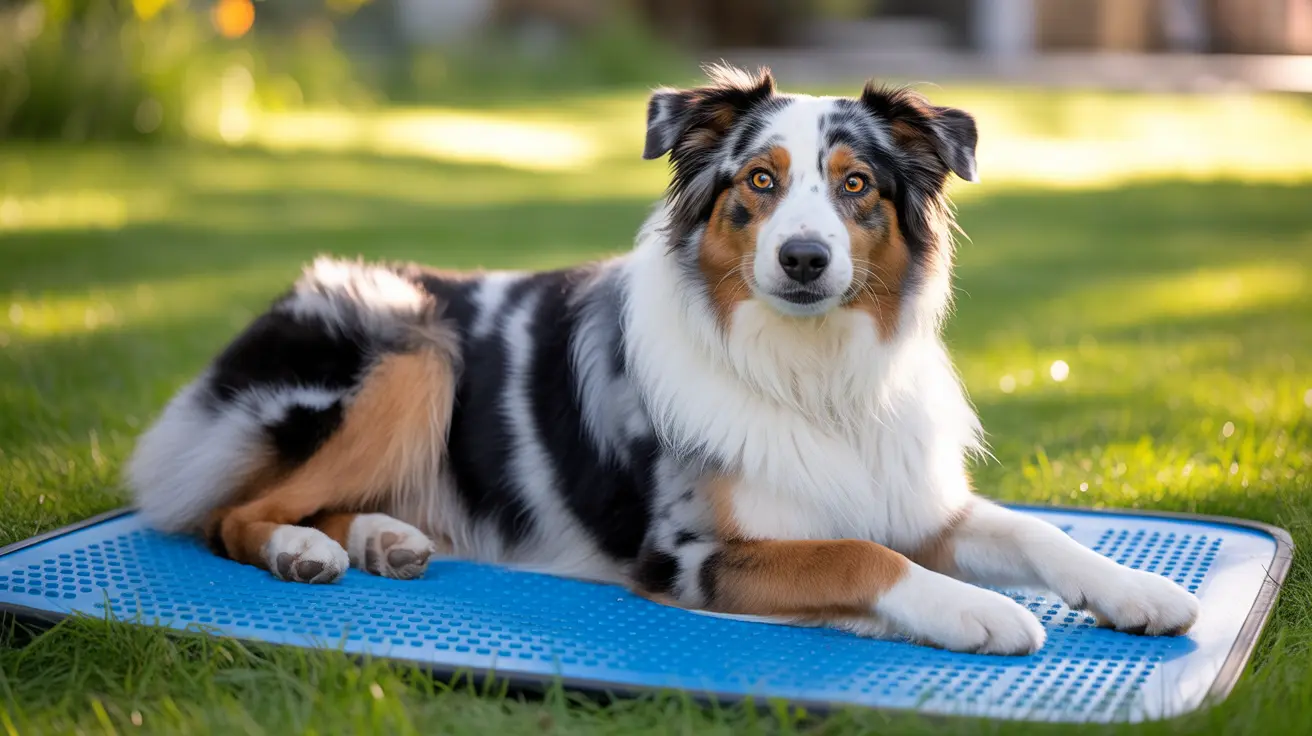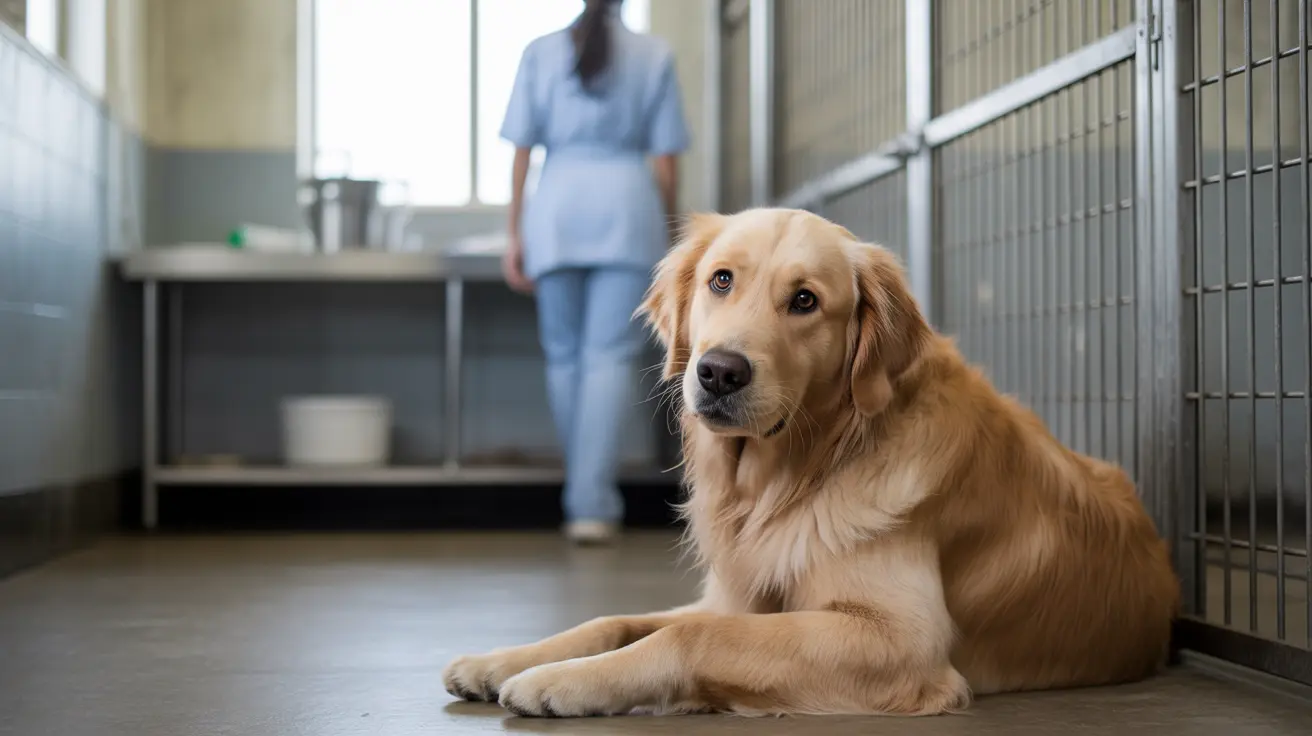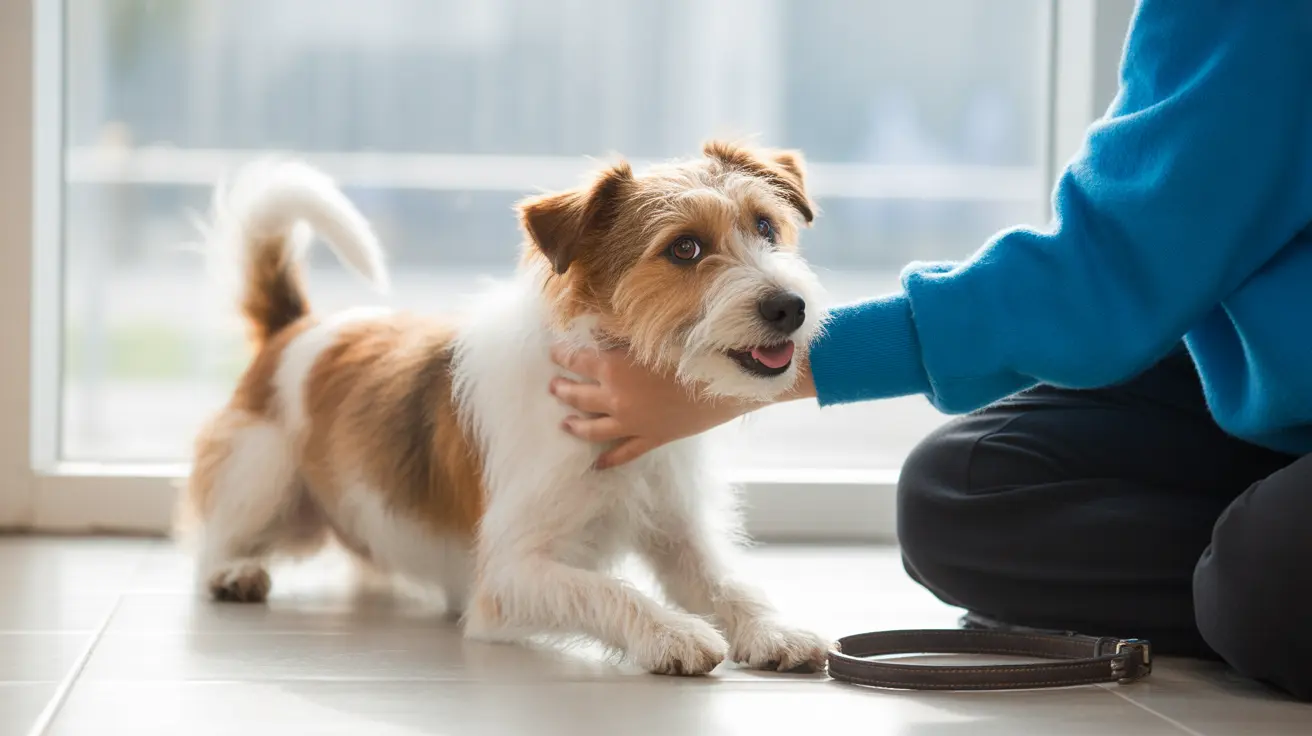Essential Dog Cooling Gear for Summer: Keep Your Pet Safe and Comfortable in Hot Weather
As summer temperatures soar, keeping your dog cool becomes a critical priority for responsible pet owners. Unlike humans, dogs have limited ability to regulate their body temperature—they don't have sweat glands and rely primarily on panting and the pads of their feet to dissipate heat. With their fur covering most of their bodies, dogs are naturally built to conserve heat rather than release it, making them particularly vulnerable to overheating during hot weather.
The right dog cooling gear for summer can make the difference between a comfortable, safe season and a potentially dangerous situation for your beloved pet. From innovative cooling mats to evaporative vests, modern pet accessories offer effective solutions to help your dog beat the heat. Understanding which products work best for your specific situation—whether you're dealing with power outages, outdoor adventures, or simply want to keep your pet comfortable at home—is essential for every dog owner facing extreme temperatures.
This comprehensive guide will walk you through the most effective cooling equipment available, help you recognize warning signs of heat stress, and provide practical solutions to ensure your dog stays safe and comfortable throughout the hottest months of the year.
Best Cooling Mats and Pads for Dogs
Cooling mats represent one of the most convenient and energy-efficient solutions for keeping dogs comfortable during hot weather. These innovative products activate through body pressure, requiring no electricity or preparation—simply lay them out for your dog to rest on and they begin working immediately. The mats provide a cool surface that helps draw heat away from your dog's body, offering relief whether you're at home or traveling.
When selecting a cooling mat, consider your dog's size and typical resting habits. Larger breeds will need more surface area to effectively cool their bodies, while smaller dogs can benefit from compact, portable options. The best cooling mats maintain their effectiveness for several hours and recharge automatically once pressure is removed, making them ideal for dogs who like to move around or take breaks from their cooling spot.
Damp towels serve as an excellent alternative or supplement to commercial cooling mats. Simply wet towels with cool (not ice-cold) water and lay them out for your dog to lie on or stand upon. This method provides immediate cooling relief and can be refreshed as needed throughout the day. For maximum effectiveness, focus on areas where your dog typically rests and ensure the towels remain damp but not soaking wet.
Cooling Vests and Coats: Evaporative Technology
Cooling vests utilize evaporative technology to maintain your dog's body temperature during outdoor activities in hot weather. These specialized garments work by holding water against your dog's body, and as the water evaporates, it creates a cooling effect that can lower their body temperature by several degrees. This process mimics the natural cooling mechanism that humans experience through sweating.
To use a cooling vest effectively, soak it in cool water according to the manufacturer's instructions, wring out excess water, and secure it around your dog's chest and back. The vest should fit snugly but not restrict movement or breathing. Most quality cooling vests remain effective for 2-4 hours before needing to be re-soaked, making them perfect for extended outdoor activities like hiking or walking during warmer parts of the day.
Maintenance of evaporative cooling vests is crucial for their longevity and effectiveness. After each use, rinse the vest thoroughly with fresh water to remove any dirt or debris, then allow it to air dry completely before storing. Regular cleaning prevents bacterial growth and ensures the evaporative material continues to function properly. Replace vests when the cooling material begins to deteriorate or loses its ability to retain water effectively.
Grooming Tools for Summer Heat Relief
Proper grooming plays a vital role in helping dogs manage summer heat, but it's important to understand that shaving is not always the solution. Dogs' coats serve as natural insulation that can actually help regulate temperature when properly maintained. The key is thinning out dense undercoat fur using specialized brushes and tools designed for your dog's specific coat type.
For double-coated breeds, regular brushing with an undercoat rake or deshedding tool removes excess fur that can trap heat while preserving the outer guard hairs that provide protection from both heat and UV rays. This approach allows better air circulation while maintaining the coat's natural temperature-regulating properties. Focus on areas where fur tends to mat or become particularly dense, such as the chest, hindquarters, and behind the ears.
Some breeds require special considerations during grooming for summer heat. White or fine-coated breeds like Bull Terriers and Greyhounds are vulnerable to sunburn and may need dog-specific sun cream applied to sensitive areas such as the nose, lips, ears, and belly. Dark-coated breeds like Schipperkes absorb more heat, making proper grooming even more critical for preventing overheating. Consult with a professional groomer to develop a summer grooming routine that's appropriate for your dog's breed and coat type.
Choosing the Right Cooling Equipment by Dog Size and Breed
Selecting appropriate cooling equipment requires careful consideration of your dog's size, breed characteristics, and typical activity level. Large breeds generate more body heat and need cooling solutions with greater surface area and capacity. Giant breed dogs may require multiple cooling mats or larger vests that provide adequate coverage for their substantial body mass.
Small and toy breeds, while generating less total body heat, can become overheated more quickly due to their faster metabolisms and reduced ability to regulate temperature efficiently. These dogs often benefit from lightweight cooling vests and smaller cooling mats that won't overwhelm their petite frames. Additionally, consider portable cooling solutions that can easily travel with smaller dogs during car rides or visits to outdoor events.
Breed-specific factors also influence cooling equipment choices. Brachycephalic breeds (those with flat faces) like Bulldogs and Pugs have compromised breathing that makes temperature regulation more difficult, requiring more intensive cooling solutions. Arctic breeds with thick double coats may need more aggressive grooming and cooling strategies, while thin-coated breeds might require a balance of cooling and sun protection to prevent both overheating and sunburn.
Recognizing Heat Stress and Emergency Response
Understanding the signs of heat stress in dogs is crucial for preventing serious health complications. Early warning signs include rapid and loud breathing, excessive thirst, weakness or fatigue, and dark or bright red tongue and gums. More severe symptoms that indicate heatstroke—a medical emergency—include rectal temperature of 103°F or higher, vomiting, disorientation, difficulty breathing, thick saliva, rapid heartbeat, heavy drooling, and agitation.
If you suspect heatstroke, immediate action is essential. Move your dog to a cooler area immediately and begin cooling procedures by separating fur to allow cool air to reach the skin. Pour cool (not ice-cold) water gently over the head and body, focusing on the chest, armpits, and paws where cooling is most effective for internal temperature regulation. You can also submerge the dog in cool water if a suitable container is available.
Monitor your dog's temperature using a dog-safe thermometer, with normal temperature being around 102.5°F and emergency care needed if temperature exceeds 104°F. Skin that doesn't snap back when pinched indicates dehydration, which may require unflavored pediatric electrolyte solution. Even if your dog appears to recover from heat stress, seek veterinary care promptly as internal damage may not be immediately apparent.
DIY Cooling Solutions and Home Remedies
When commercial cooling products aren't available, several effective DIY solutions can help keep your dog cool. A spray bottle filled with cool water provides instant relief when misted under the body and on the feet. Focus on areas with less fur coverage for maximum effectiveness, and avoid spraying directly in your dog's face to prevent stress or discomfort.
Frozen treats offer both cooling and entertainment value during hot weather. Create simple ice treats using low-sodium broth, plain water, or diluted unsweetened fruit juices frozen in ice cube trays or special treat molds. These frozen treats provide internal cooling while giving your dog a fun activity that helps distract from the heat. Always supervise your dog with frozen treats to prevent choking on large pieces.
Rubbing alcohol can provide rapid cooling when dabbed behind the ears, on the stomach, or on the paws, as it evaporates faster than water and creates a more intense cooling effect. Use this method sparingly and ensure your dog doesn't lick the treated areas. For longer-term cooling, create a simple cooling station using a shallow kiddie pool filled with cool water, allowing your dog to wade or lie in the water as desired.
Summer Hydration and Safe Outdoor Activities
Maintaining proper hydration is fundamental to helping dogs cope with summer heat. Provide plenty of fresh, cool water at all times, refreshing it frequently throughout the day. Adding ice cubes to water bowls not only keeps the water cooler longer but also provides additional cooling as dogs lick or chew the ice. Carry a portable water bottle specifically designed for dogs during walks or outdoor activities.
Timing outdoor activities strategically can prevent heat-related problems while still allowing your dog to enjoy exercise and fresh air. Schedule walks for early morning or late evening when ground and ambient temperatures are cooler, protecting both your dog's paws and overall comfort level. Avoid outdoor activities during peak heat hours from 12pm to 3pm, when temperatures reach their highest levels.
Create safe outdoor environments by ensuring adequate shade is always available. This might include natural shade from trees, portable canopies, or insulated kennels with proper ventilation and cooling features. Never leave dogs in parked cars, even with windows cracked, as temperatures inside vehicles can reach lethal levels within minutes. For dogs who must spend time outdoors, equip their areas with cooling features like fans, proper ventilation, screened windows, and insulated flooring.
Frequently Asked Questions
- How do cooling mats work and do they really help dogs stay cool?
Cooling mats work by activating through body pressure and using special gel or materials that absorb and dissipate heat from your dog's body. They provide an immediate cool surface that helps draw heat away from your pet, offering several hours of relief before automatically recharging once pressure is removed. They're particularly effective for dogs who like to lie down frequently and need a cool resting spot.
- How often should I re-soak my dog's cooling vest during hot weather?
Most quality cooling vests remain effective for 2-4 hours before needing to be re-soaked. However, in extremely hot conditions or during vigorous activity, you may need to refresh the vest more frequently. Monitor your dog's comfort level and re-soak the vest whenever it begins to feel dry or your dog shows signs of overheating.
- Is it safe to shave my dog completely for summer heat relief?
No, completely shaving your dog is not recommended as their coat serves as natural insulation that helps regulate temperature. Instead, focus on proper grooming by thinning out dense undercoat fur while preserving outer guard hairs. This approach allows better air circulation while maintaining the coat's protective properties against both heat and UV rays.
- What temperature is too hot for my dog to be outside?
Dogs should avoid outdoor activities when ambient temperatures exceed 85°F, especially during peak sun hours. However, this varies by breed, age, and health status. Brachycephalic breeds and elderly dogs may need to stay indoors at lower temperatures. Always check ground temperature with your hand—if it's too hot for your palm, it's too hot for your dog's paws.
- What should I do if my dog shows signs of heatstroke?
If your dog shows signs of heatstroke (rapid breathing, temperature above 103°F, vomiting, disorientation), move them to a cool area immediately and begin cooling with cool water poured over the head and body, focusing on chest, armpits, and paws. Use a thermometer to monitor temperature and seek veterinary care promptly, even if symptoms improve.
- Can I use human cooling products on my dog?
Some human cooling products can be adapted for dogs, but use caution. Cooling towels designed for humans can work if they don't contain chemicals harmful to pets. However, avoid products with menthol, alcohol-based cooling gels, or any substances toxic to dogs. Stick to pet-specific cooling products when possible for safety.
- How can I keep my dog cool during power outages when there's no air conditioning?
During power outages, move to the coolest part of your house like the basement, use battery-operated fans, provide cooling cloths and damp towels for your dog to lie on, and use spray bottles with cool water for misting. Consider staying with friends or family who have power, and keep cooling supplies like portable fans and cooling mats specifically for emergency situations.
Conclusion
Investing in proper dog cooling gear for summer is essential for protecting your pet's health and comfort during hot weather. From pressure-activated cooling mats that require no preparation to evaporative vests that provide hours of temperature relief, the right equipment can make summer enjoyable rather than dangerous for your dog. Remember that effective cooling strategies combine multiple approaches—proper hydration, strategic timing of activities, appropriate grooming, and quality cooling accessories all work together to keep your pet safe.
The key to successful summer pet care lies in understanding your individual dog's needs and preparing before extreme heat arrives. By recognizing the signs of heat stress, maintaining appropriate cooling equipment, and implementing both commercial and DIY solutions, you can ensure your dog stays comfortable and healthy throughout the hottest months. Your proactive approach to summer cooling not only prevents heat-related emergencies but also allows your dog to continue enjoying outdoor activities and quality time with family during the beautiful summer season.






